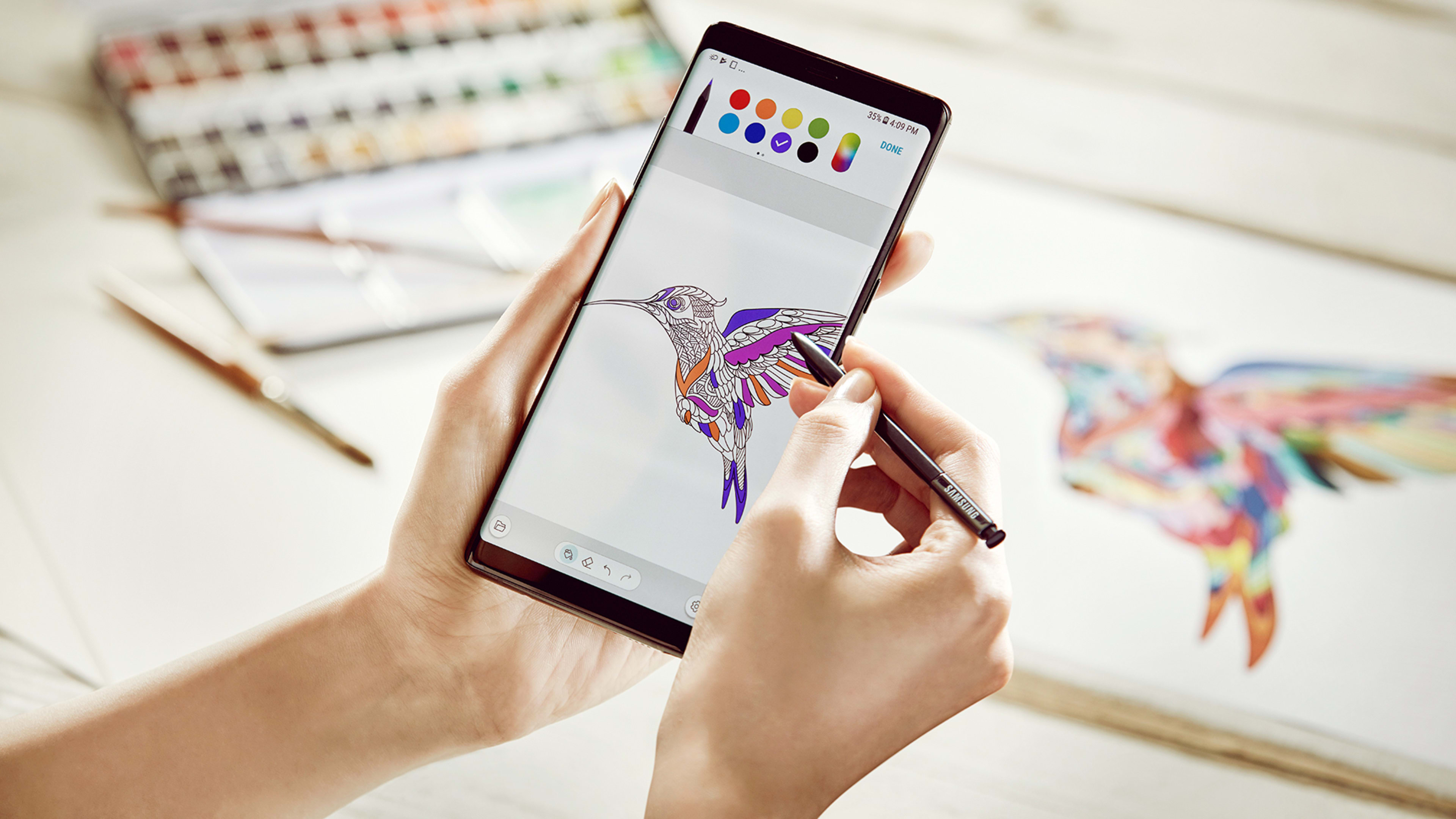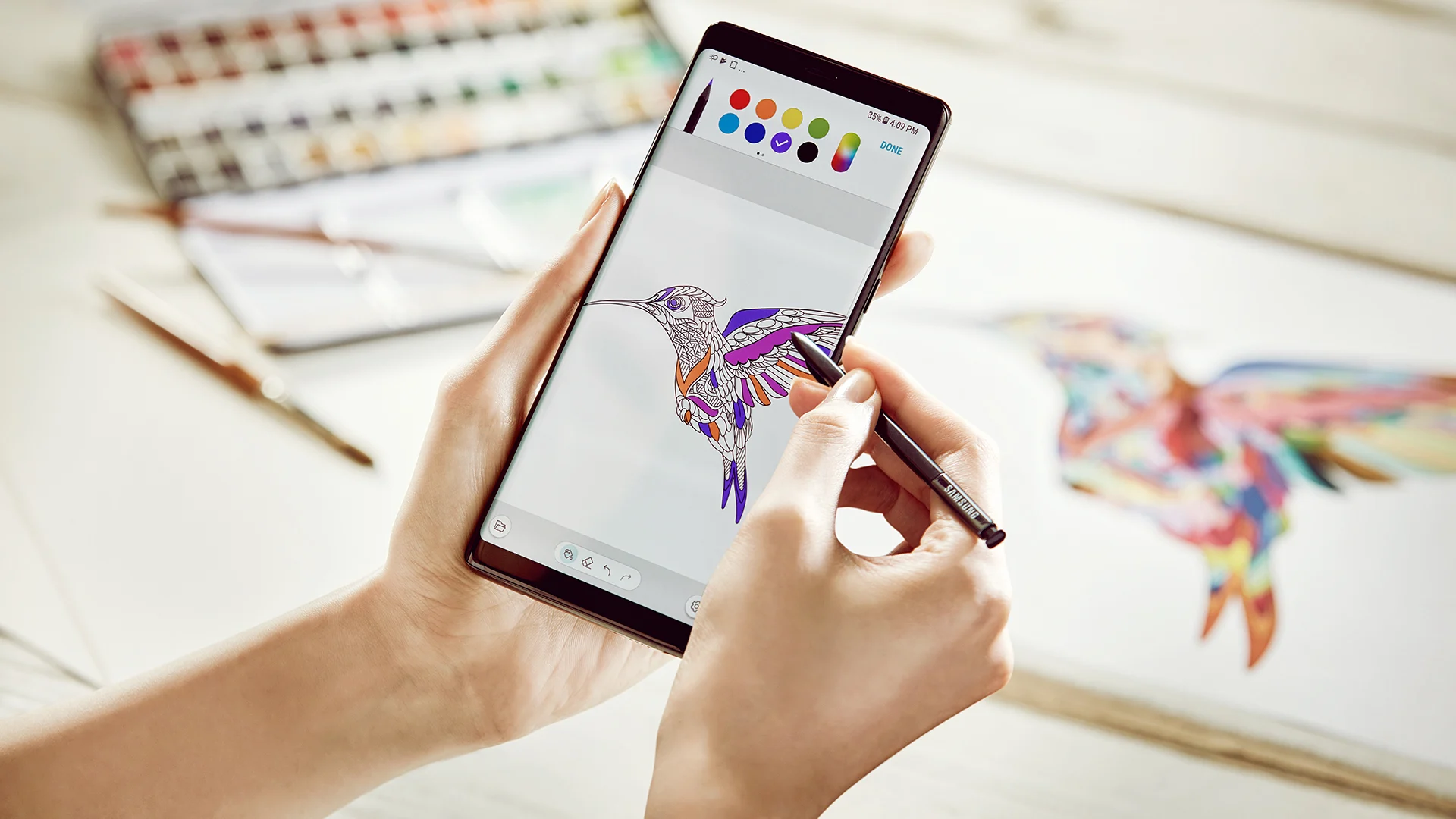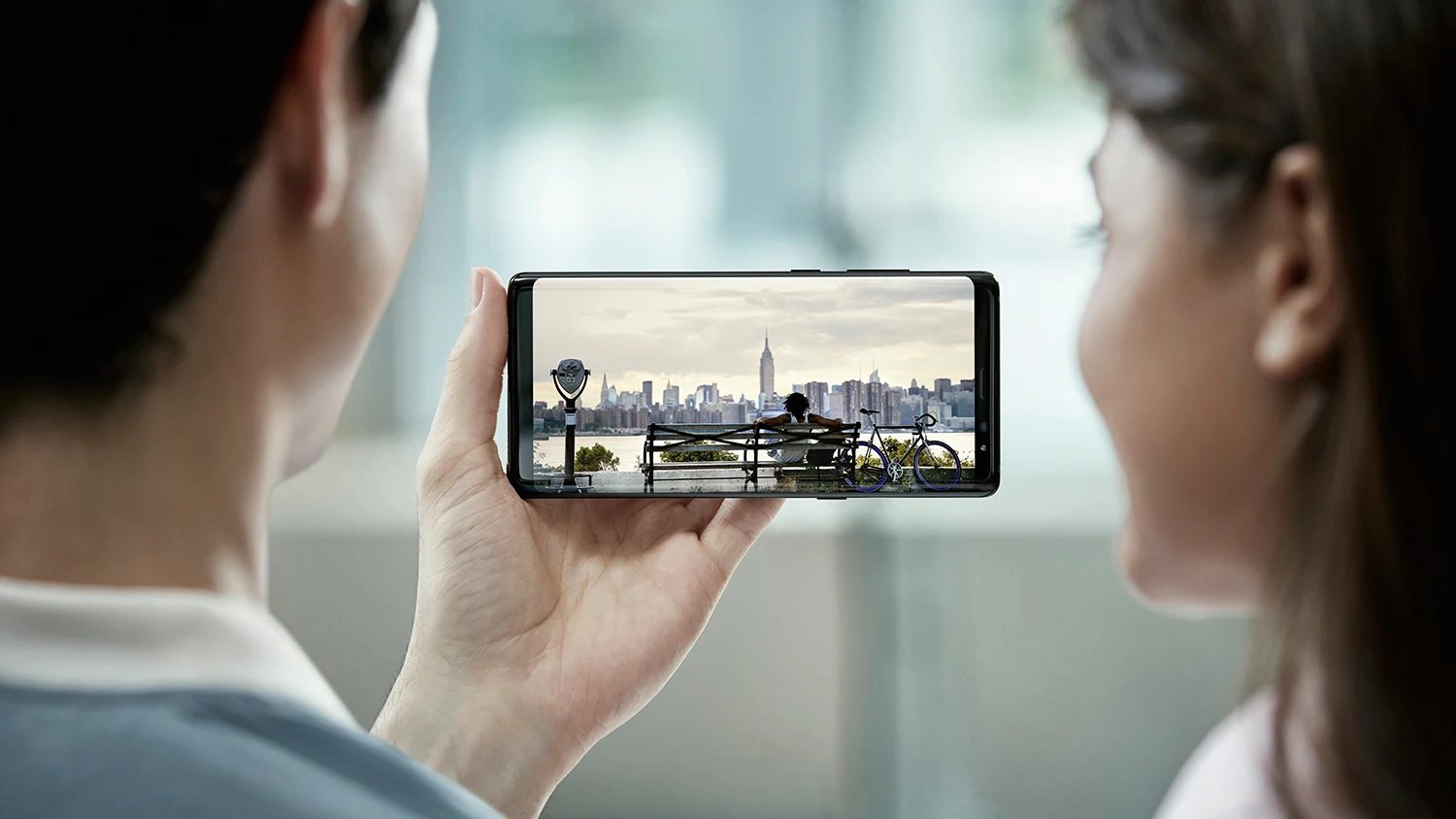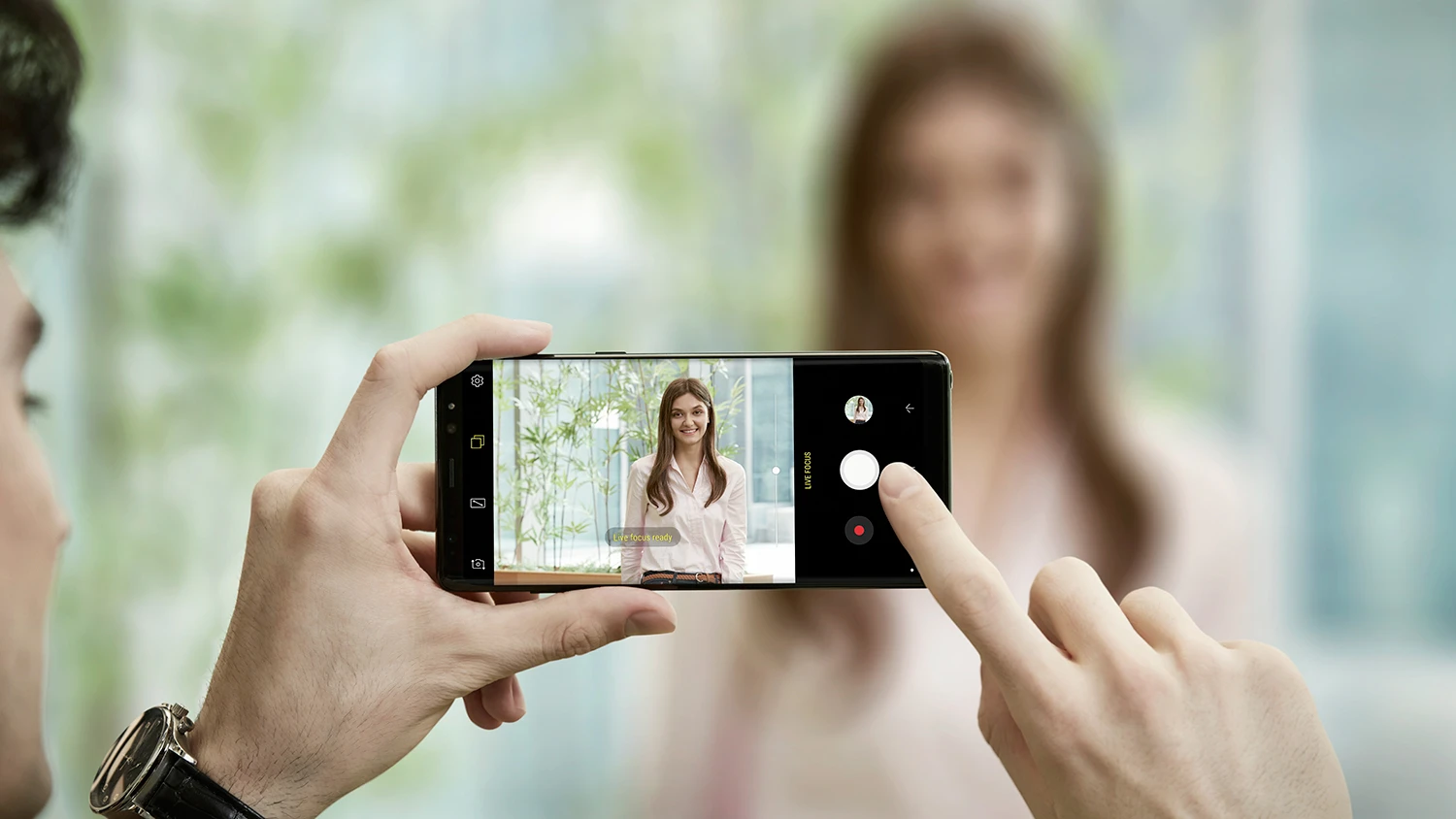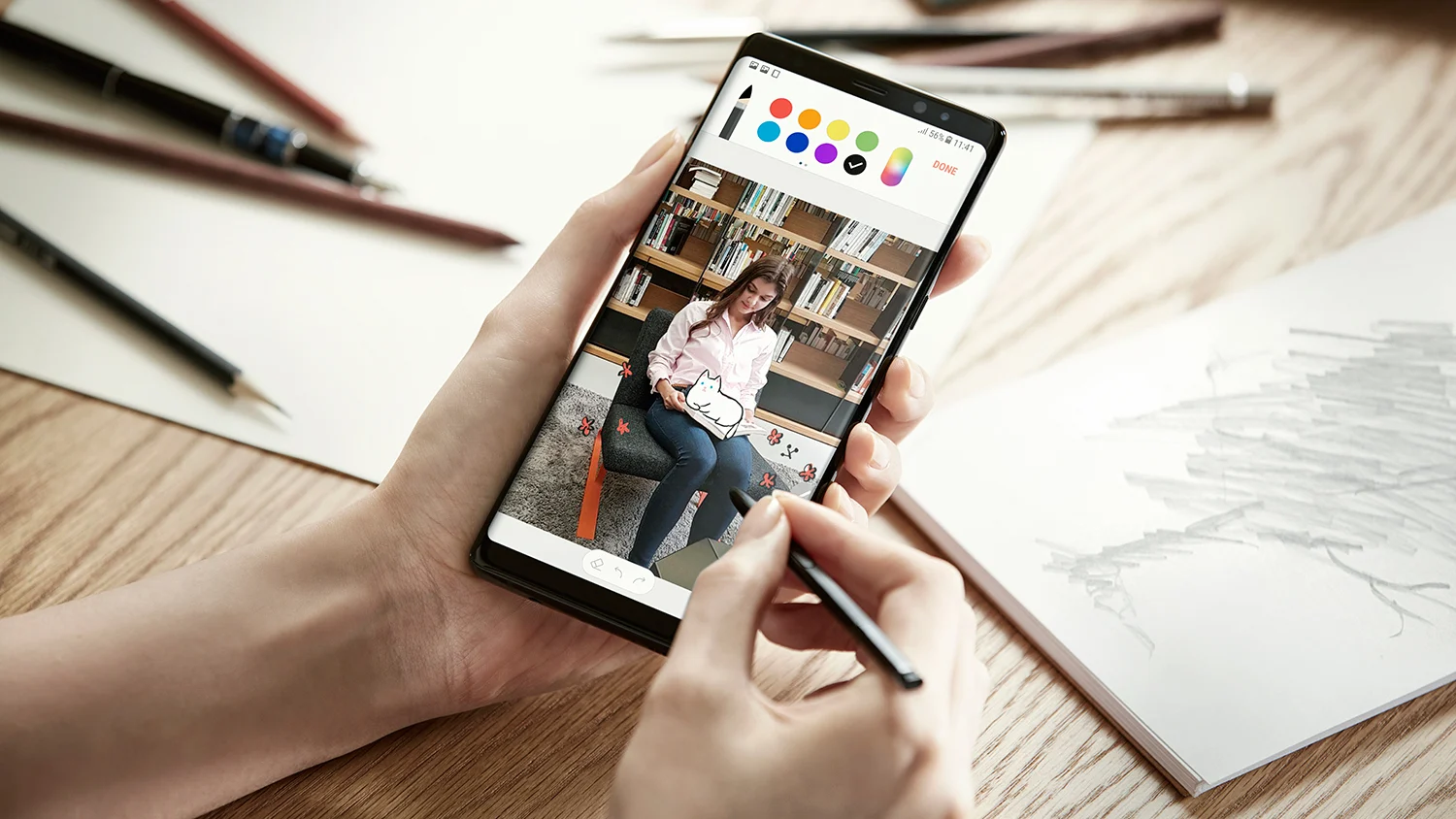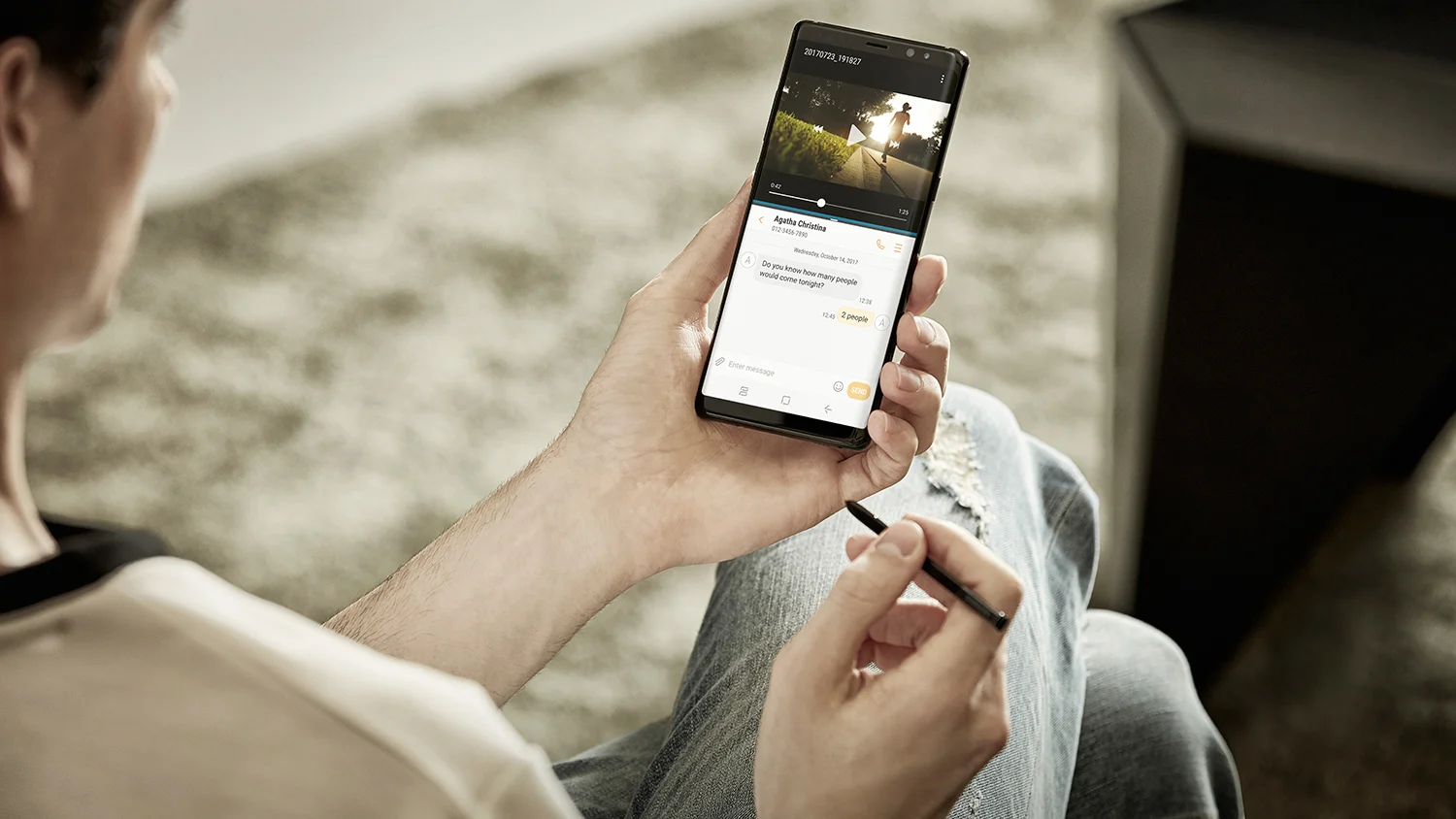When I met rececently with Tim Baxter, the CEO of Samsung Electronics North America, to chat about the company’s new Galaxy Note 8 smartphone, he prefaced the conversation by showing me a video featuring owners of previous Notes rhapsodizing over their phones and expressing giddy anticipation for the new model. The company has said in the past that fans of the Note—a power-user phone whose signature features are its big screen and S Pen stylus—are a passionate bunch. Third-party surveys have reflected that, as have my own anecdotal encounters with Note aficionados over the years. So I wasn’t startled by the idea that people who love the Galaxy Note really love it.
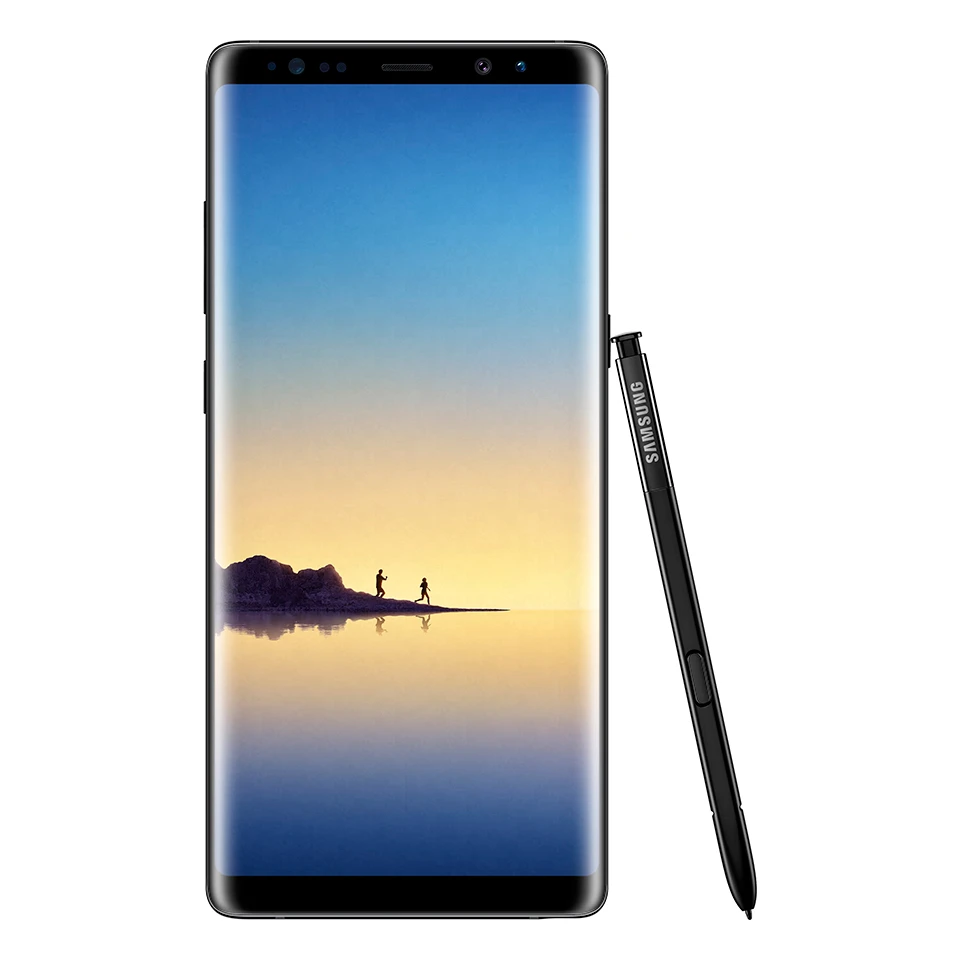
The Note 7’s woes were so severe and well-publicized that it’s only reasonable to wonder if they permanently damaged the Note’s reputation. But Baxter told me that Samsung quickly concluded that the people who cared about the Note hadn’t abandoned it: “We talked to thousands of consumers during this crisis last year and they said, ‘We love this product and love this brand.'” In research Samsung conducted in the wake of the mess, it learned that 86% of Note owners agreed (strongly or somewhat) with the sentiment “I love my Galaxy Note,” that 74% of them said it was the best phone they’d ever owned, and that 76% couldn’t wait for the new model. “It gives us confidence and underscores the importance of managing that loyalty,” Baxter says.
“We know we had a stumble last fall,” he adds. “We’ve accepted that and learned from that and applied new processes and gotten up and dusted ourselves off and continued to innovate.” Samsung has bounced back a fair amount already: It recently reported record profits and credited strong sales of its Galaxy S8 and S8+ with contributing to that accomplishment. The flammable Note 7 is still fresh enough a memory that the company is emphasizing the testing it’s put the Note 8 through, including having it checked out by UL (Underwriters Laboratories), which isn’t a standard practice for new phones. But barring any surprises, a successful rollout for the new model would be Samsung’s last step in putting last year’s unpleasantness behind it.
Let’s Try This Again
The fact that the Galaxy Note 7 was on the market for less than two months before being permanently withdrawn means that the Note 8 is, practically speaking, as much of a successor to 2015’s Note 5 as it is to the Note 7. (There was no Note 6.) It sports a bunch of features that the Galaxy Note line first got in the Note 7, including iris-scanning technology for security, the ability to use the S Pen to jot notes on the screen even when the display is not fully powered up, IP68 resistance against water and dust, and a reversible USB-C connector instead of old-school MicroUSB. Samsung is even promoting S Pen features such as its 4,096 levels of pressure sensitivity—the same as with the Note 7, but double that of the Note 5–as if they were new.
Beyond the aspects it holds over from the Note 7, the Note 8 shares many features and design philosophies with this year’s Galaxy S8 and S8+—most notably its tall-boy display, which goes all the way to the left- and right-hand edges and incorporates a virtual home button rather than needing to leave room for a physical one. That’s how Samsung managed to squeeze a 6.3″ screen into a case that—judging from the time I spent with one—doesn’t feel like any more of a handful than the 5.7″ Note 7. (The downside: As on the S8 and S8 Plus, Samsung relocated the fingerprint scanner to the phone’s backside, where it sits so close to the camera that your fingertip may confuse them.)
The edges of the Note 8’s screen are curved, but less aggressively so than in the case of the Galaxy S8 and S8+; Samsung decided that flatter was better given that people use the S Pen to write on the Note 8’s screen as if it were a piece of paper. The company made the pen more useful by letting you fill up to 100 pages with notes without turning the screen on, and added a clever feature that lets you use it to add special effects to handwritten jottings and then send them to friends as animated GIFs within any messaging app.
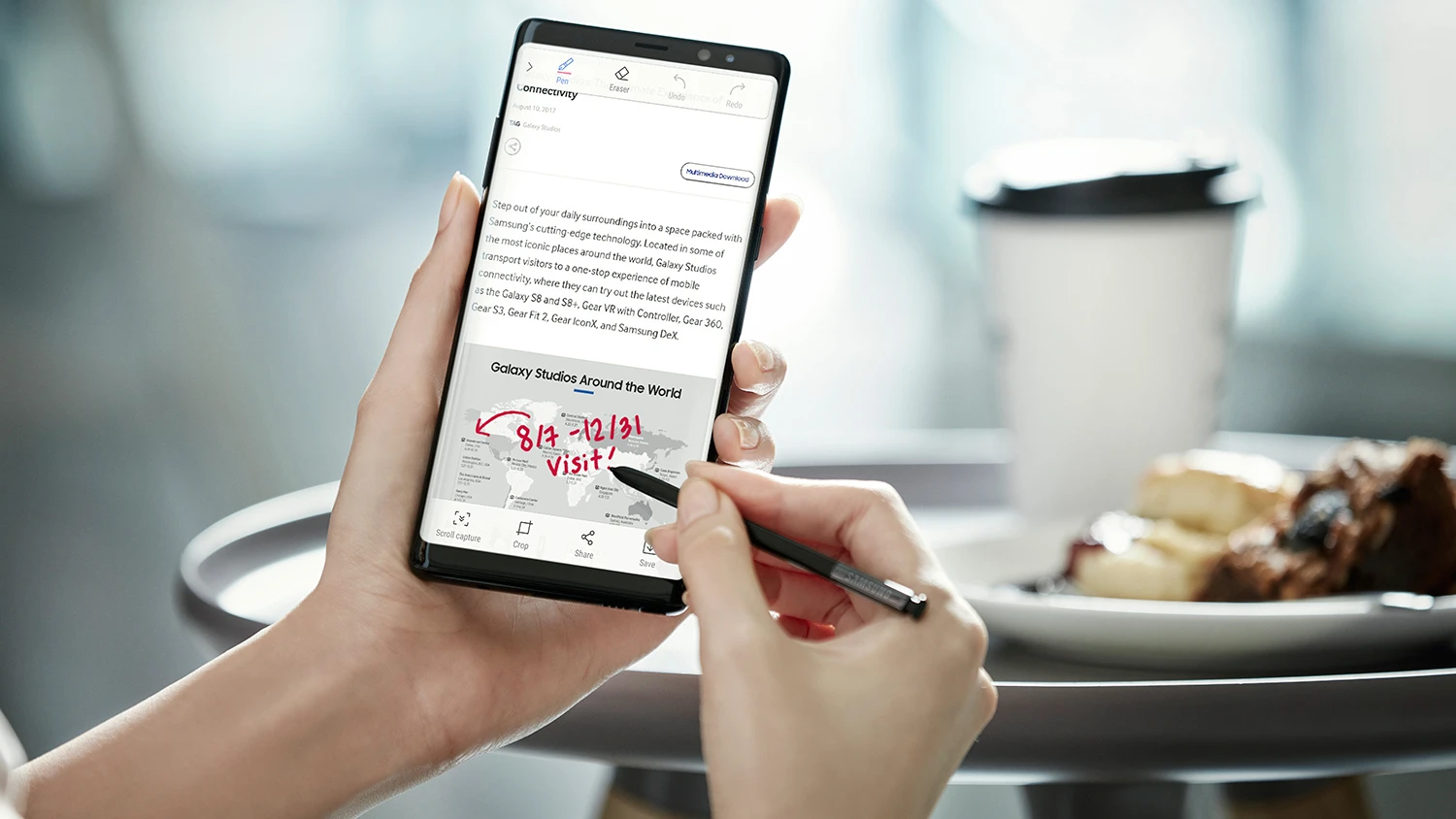
To demonstrate the value of image stabilization, Samsung rigged a box to vibrate on demand as a Note 8 and iPhone 7 Plus took photos of a simulated scene with their wide-angle lenses. In this controlled environment, at least, the Note image came out crisp and the iPhone one was a blurry disappointment.
Of course, the Galaxy Note 8’s real rival won’t be the iPhone 7 Plus but rather the next top-of-the-line iPhone, which could well be announced before the Note 8 hits carrier stores on September 15 and will reportedly offer a Note-esque expansive OLED screen. “The two brands that represent 90% of the market are launching flagship products at the same time,” says Baxter, who told me that Samsung thinks that 50 million people in the U.S. will be ready to upgrade their smartphones this fall.
For all the Galaxy Note 7 went through last year—and despite the prospect of competing with a new iPhone that sounds more Note-like than any before it—the Note 8’s animating principle remains the same as it’s been since the first version shipped in 2011. This phone, says Baxter, is for “the consumers that want to do more and do it all and do big things and do great things.”
Recognize your brand’s excellence by applying to this year’s Brands That Matter Awards before the early-rate deadline, May 3.
